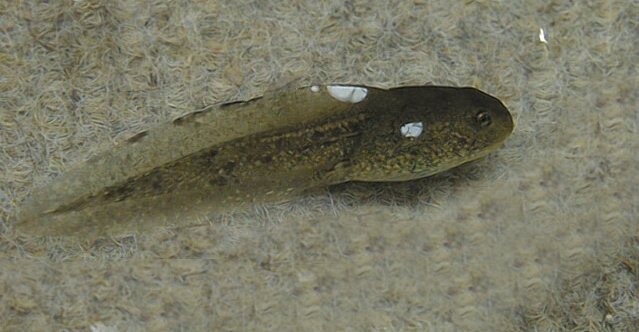
definitions:
tadpoles- baby frogs
regeneration- regrowth of bodily organs
NaV1.2- protein that create sodium channel
sodium channel- integral membrane proteins (connected to membrane) form together is selectively permeable in letting sodium ions pass through the plasma membrane
sodium transports-
Summary:
Scientists in Massachusetts studying regeneration conducted an experiment on the Xenopus laevis, or African Claw Frog, to help them better understand how cells can be repaired. They first amputated the tadpoles tails, and then injected a rush of salt into the area where the tail was. The salt inrush proved to have helped the rate of regrowth. Usually, the NaV1.2 is prevented from entering the cell, therefore deterring or completely stopping the rate of regeneration. The reason that the salt never reaches the cell and helps it rejuvenate is because it is stopped by sodium transports. NaV1.2 is associated with one of the main components needed to help regeneration, so when it is not able to get through, the chances of the cell revitalizing are slim. But if scientists find a way to regulate sodium transports, that would allow the sodium ions to enter the cell, allowing the cell to undergo changes.
Discussion:
I think this is really interesting because this brings us one step closer to solving medical problems, such as spine problems or limb loss. But, we should look further into this idea because we would not want any negative side effects, which might be impossible. If scientists can get this to work, we would be able to help soldiers and maybe even handicapped people who undergo loss of arms and legs. That would be a huge accomplishment and a pioneer the idea of generation. New discoveries always lead to discoveries that build on previous discoveries, so if these Massachusetts scientists can overcome this challenge and find a way to make it work, that would be SO impressive.
Questions:
What future studies will be conducted and what kind of experiments to further expand on this concept?
What other information is there on mutation that can help them? Are there any other experiments that they can learn from?
Sources:
http://www.jneurosci.org/cgi/content/abstract/30/39/13192
http://www.nytimes.com/2010/10/12/science/12obsalt.html
http://ghr.nlm.nih.gov/gene/SCN5A
http://ghr.nlm.nih.gov/gene/SCN2A